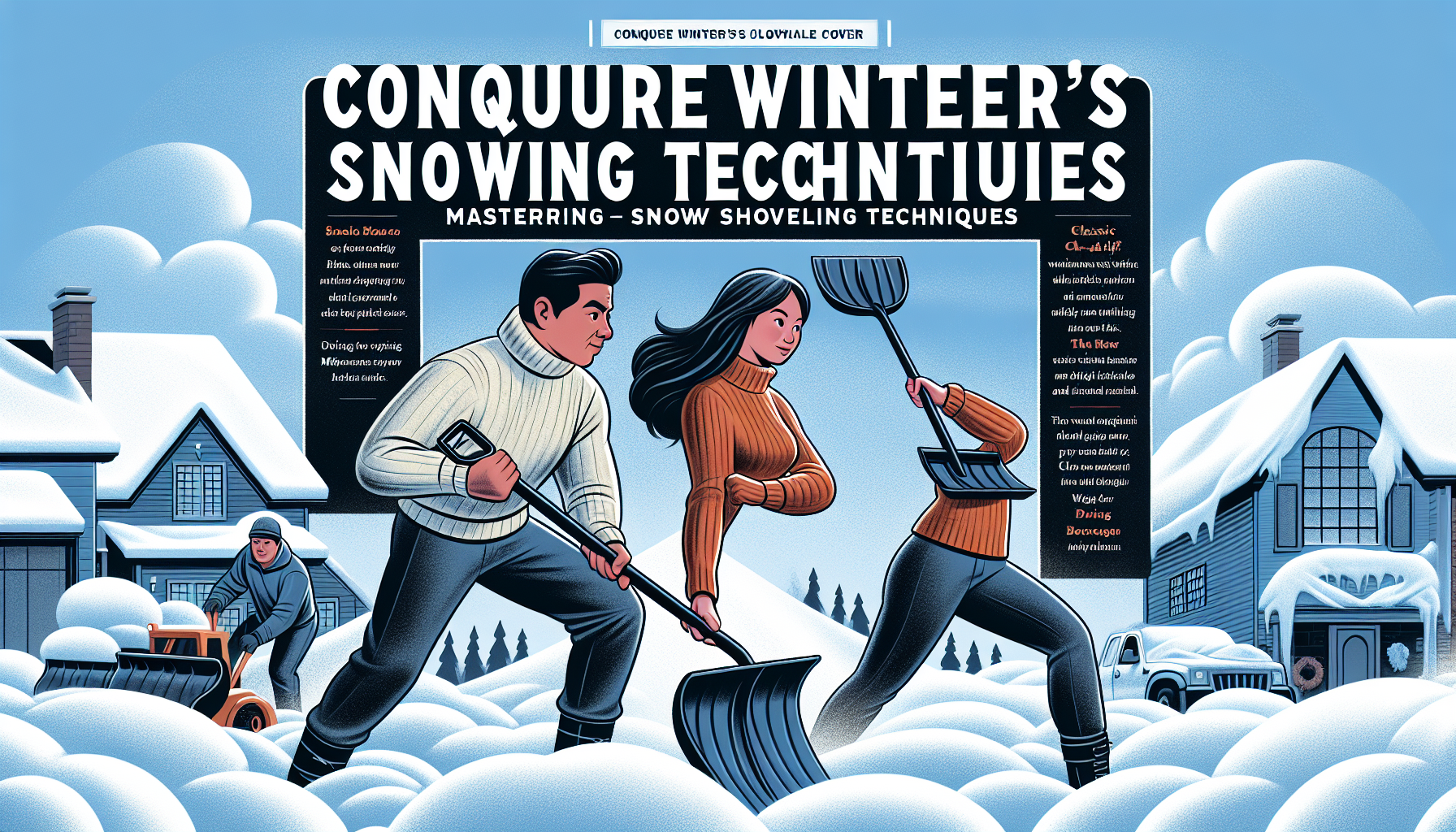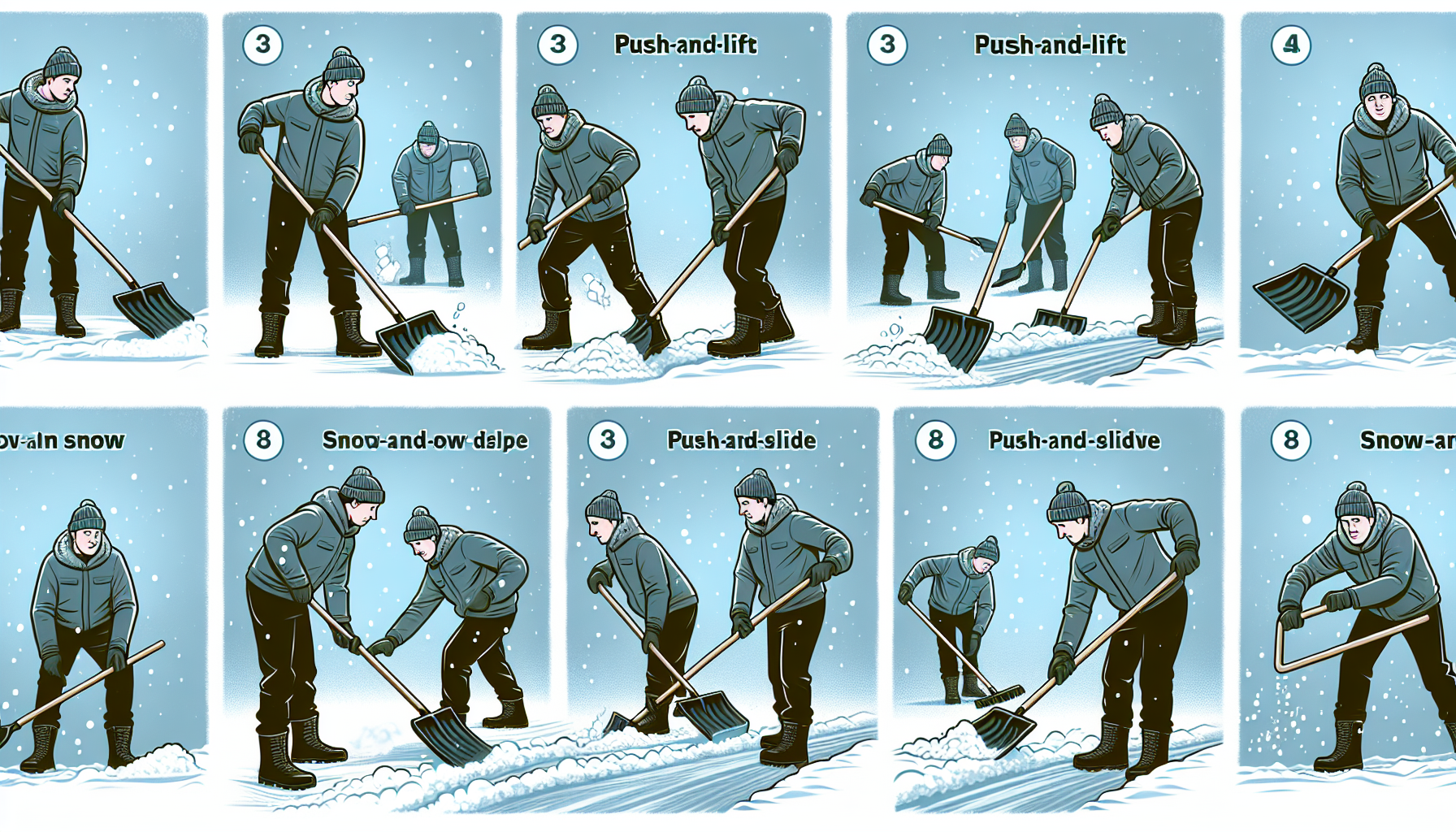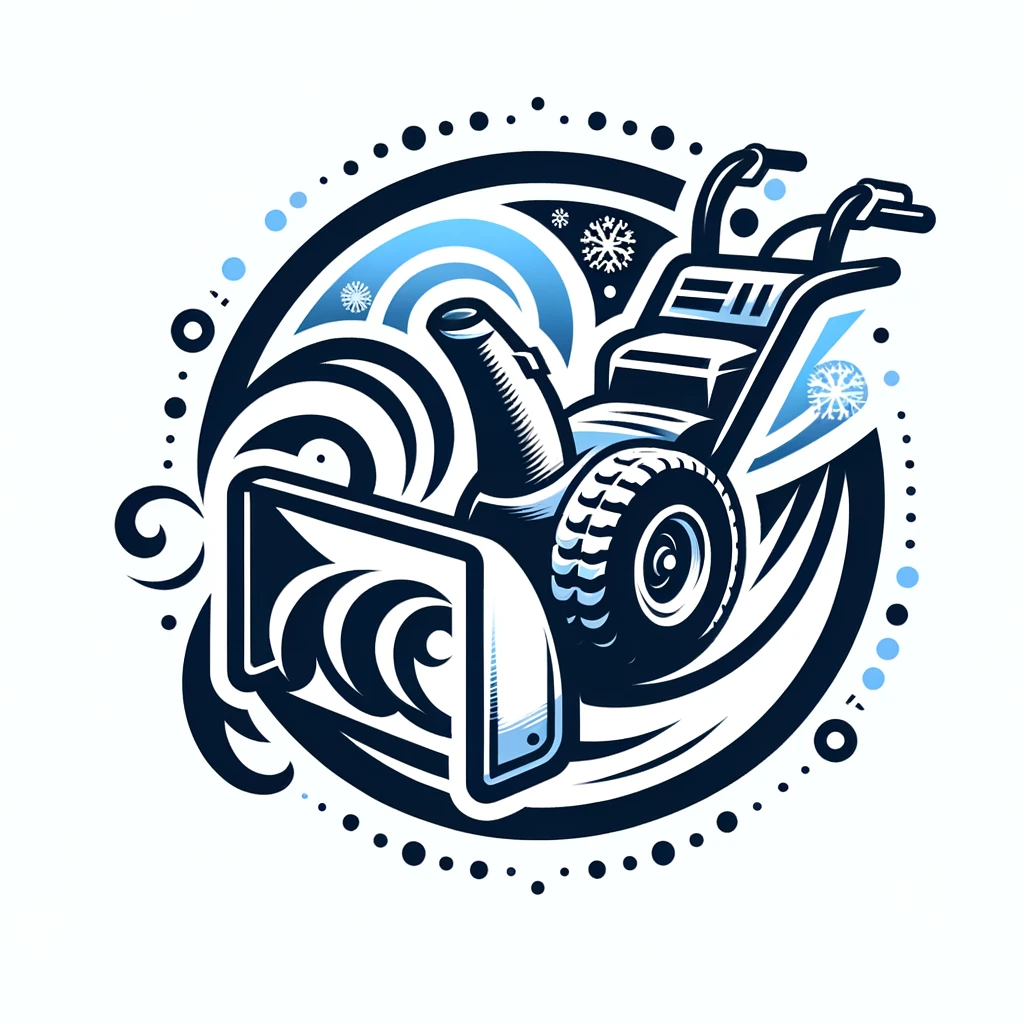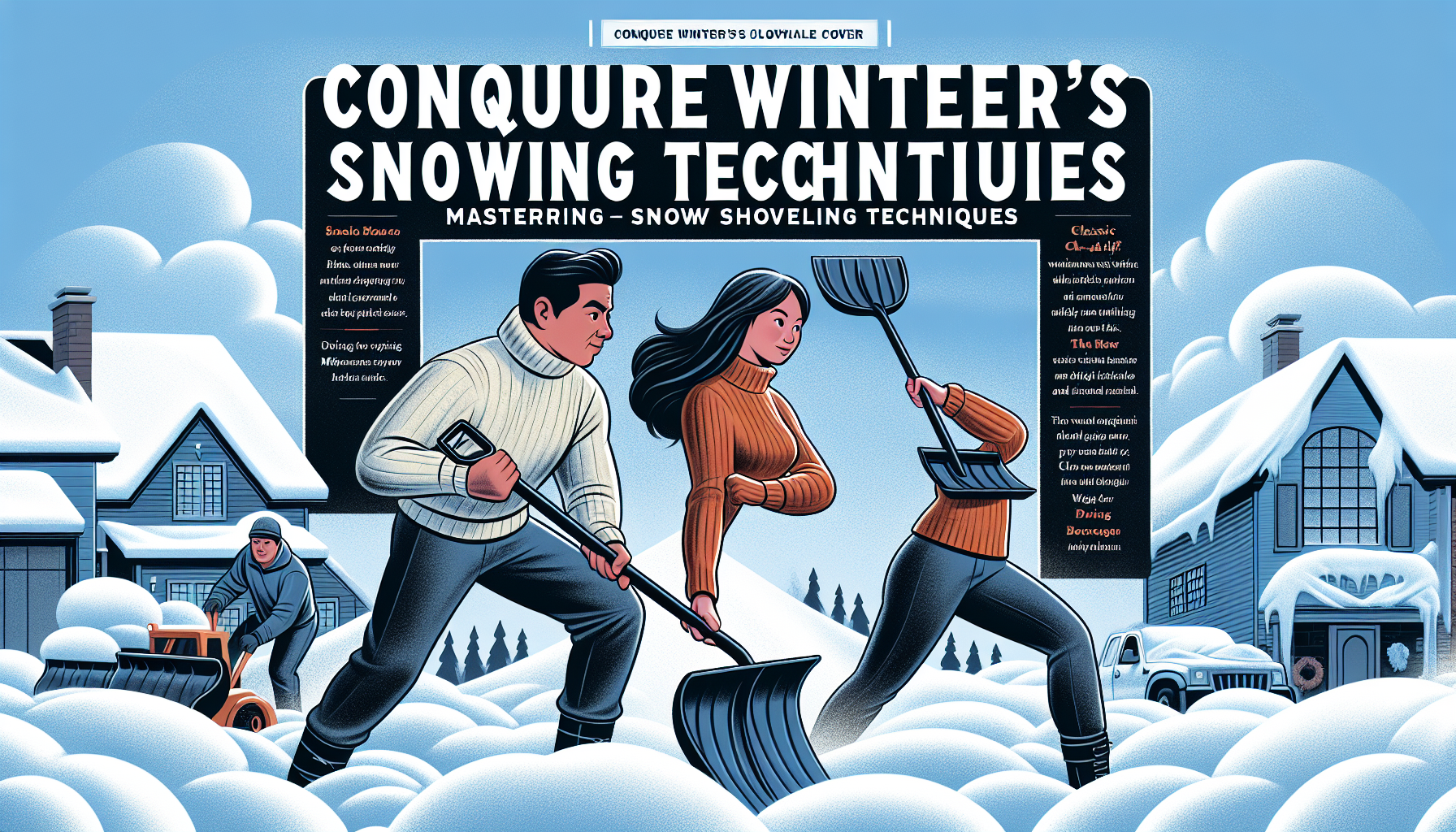Are you tired of spending hours in the freezing cold trying to shovel your way out of a snowstorm? Look no further, because we have the solution you’ve been searching for! Discover the best shoveling technique for snow that will save you time, energy, and keep you injury-free. By following this simple yet effective technique, you’ll be able to conquer even the heaviest snowfall with ease. Say goodbye to backaches and hello to a smooth and efficient shoveling experience.

The Importance of Using the Right Shoveling Technique
Snow shoveling may seem like a simple task, but using the right technique is crucial for a number of reasons. Whether you’re clearing your driveway, sidewalk, or any other outdoor space, following proper shoveling techniques can help prevent injuries, avoid damage to surfaces, and ensure efficient snow removal.
Preventing Injuries
One of the main reasons to use the right shoveling technique is to prevent injuries. Shoveling snow can be physically demanding, especially if you’re dealing with heavy or wet snow. Improper technique can put unnecessary strain on your back, shoulders, and joints, increasing the risk of muscle strains, sprains, or even more serious injuries. By using the correct technique, you can minimize the risk of these injuries and protect your body while clearing snow.
Avoiding Damage to Surfaces
Another important aspect of using the right shoveling technique is to avoid damage to the surfaces you’re clearing. Improper shoveling techniques can result in scratches, gouges, or other forms of damage to your driveway, sidewalk, or patio. By using the correct technique, you can minimize the risk of causing any unnecessary damage and keep your outdoor surfaces in great condition.
Efficiency in Snow Removal
Using the right shoveling technique can also greatly enhance the efficiency of your snow removal efforts. By employing efficient and effective techniques, you can clear snow more quickly and easily, allowing you to save time and energy. This is particularly important during heavy snowfalls or when you have a large area to clear. By using the right technique, you can get the job done more efficiently and enjoy the benefits of a cleared space sooner.
Choosing the Right Shovel
Now that you understand the importance of using the right shoveling technique, let’s dive into choosing the right shovel for the job. Selecting the right shovel can greatly impact your shoveling experience and overall effectiveness.
Consider the Shovel’s Design
When choosing a shovel, consider the design of the blade. Look for a shovel with a wide blade that allows you to scoop up larger amounts of snow with each pass. A curved blade can also be beneficial, as it helps to prevent snow from slipping off the shovel.
Evaluate the Handle Length
Another important factor to consider is the handle length of the shovel. The handle should be long enough to allow you to maintain proper posture while shoveling, without needing to hunch over or bend too much. A longer handle can also provide better leverage, making it easier to lift and move snow.
Check the Weight and Material
Consider the weight of the shovel before making a purchase. A lighter shovel can be easier to maneuver, reducing the strain on your arms and back. Additionally, pay attention to the material the shovel is made of. Lightweight materials such as aluminum or plastic can make shoveling less physically demanding compared to heavier options like steel.
Preparing Yourself and the Area
Next, let’s discuss how to properly prepare yourself and the area you’ll be shoveling. Taking a few minutes to prepare can make a significant difference in your shoveling experience.
Wear Appropriate Clothing
First and foremost, dress appropriately for the weather conditions. Layer your clothing to stay warm but also allow for ventilation as you work up a sweat. Don’t forget to wear insulated, waterproof gloves to protect your hands from the cold and wet. Proper footwear with good traction is also important to prevent slips and falls on icy surfaces.
Warm Up Before Shoveling
Before you start shoveling, it’s essential to warm up your muscles and get your blood flowing. Performing some light stretching exercises can help prepare your body for the physical activity ahead. Taking a brisk walk or doing a few minutes of light cardio can also help loosen up your muscles and prevent injuries.
Clear the Area of Obstacles
Before you begin shoveling, take a few minutes to clear the area of any obstacles. Remove any items such as toys, stones, or debris that could potentially be hidden under the snow. This will not only make shoveling easier but also reduce the risk of injuring yourself or damaging your shovel.

Proper Shoveling Technique
Now that you’re equipped with the right shovel and have prepared yourself and the area, it’s time to focus on using the proper shoveling technique. Following these steps will help ensure a safe and efficient snow removal process.
Start with a Small Shovel Load
Instead of trying to lift a heavy load of snow in one go, start with a small shovel load. This will help reduce the strain on your muscles and make shoveling easier. Take smaller, manageable scoops of snow and gradually work your way through the area you’re clearing.
Bend Your Knees and Lift with Your Legs
When lifting the snow, use your leg muscles instead of relying solely on your back and arms. Bend your knees and keep your back straight, then lift with your leg muscles while keeping the shovel close to your body. This technique distributes the weight throughout your body and minimizes the strain on your back.
Avoid Twisting Your Back
As you lift the shovel, it’s important to avoid twisting your back while moving the snow. Instead, pivot your entire body with your feet, turning in the direction you want to throw the snow. Twisting your back can put excessive strain on your spine and increase the risk of injury.
Pushing Versus Lifting
When possible, consider pushing the snow instead of lifting it. Pushing allows you to utilize your body weight and the momentum of the shovel to move the snow forward. This technique is especially useful for moving large amounts of lighter, powdery snow. However, when dealing with heavier or wet snow, lifting may be unavoidable.
Use Your Body Weight to Your Advantage
Make use of your body weight to your advantage when shoveling. Instead of relying solely on your upper body strength, rock your body weight forward as you lift the shovel. This can help generate additional power and make lifting and moving the snow easier and more efficient.
Dealing with Heavy or Wet Snow
Heavy or wet snow can pose additional challenges when it comes to shoveling. It’s important to adjust your technique and approach to ensure safe and effective snow removal.
Use a Lighter Load with Heavy Snow
When shoveling heavy snow, it’s best to take smaller loads to prevent strain and overexertion. Scoop up smaller amounts of snow to avoid putting excessive stress on your muscles and joints. Remember, it’s better to take more trips with lighter loads than to risk injuring yourself with a heavy load.
Treat Wet Snow with Care
Wet snow is particularly heavy and can be more challenging to shovel. Take extra care when lifting and moving wet snow to prevent straining your back. Use the proper lifting technique, engaging your leg muscles and avoiding twisting motions. Consider using a shovel with a larger blade that can handle heavier loads.
Consider Using a Snow Blower or Snow Pusher
If you frequently deal with heavy or wet snow, it might be worth considering investing in a snow blower or snow pusher. These machines can greatly reduce the physical strain of shoveling, making snow removal easier and more efficient. However, be sure to familiarize yourself with the operating instructions and safety precautions before using any powered snow removal equipment.
Snow Shoveling Safety Tips
While using the right shoveling technique is crucial, it’s equally important to prioritize safety when clearing snow. Here are some essential safety tips to keep in mind:
Listen to Your Body
Pay attention to how your body is feeling while shoveling. If you experience any pain or discomfort, take a break and give yourself time to rest. Ignoring pain signals can lead to injuries, so it’s important to listen to your body and not push yourself too hard.
Take Breaks When Needed
Remember to take regular breaks during your snow removal session. Shoveling can be physically demanding, so give yourself time to rest and recover. Use the breaks to stretch your muscles and rehydrate before continuing with your snow clearing tasks.
Stay Hydrated
Even though it may be cold outside, it’s essential to stay hydrated while shoveling. Drink water or a sports drink to replenish the fluids lost through sweating. Proper hydration helps maintain your energy levels and prevents dehydration, which can lead to fatigue and muscle cramps.
Avoid Overexertion
While it’s important to clear your outdoor spaces promptly, avoid overexerting yourself. Pace yourself and work at a comfortable and sustainable pace. Pushing beyond your limits can increase the risk of injuries and leave you exhausted.
Use Caution on Slippery Surfaces
Be cautious when shoveling on slippery surfaces such as icy driveways or walkways. Wear footwear with good traction to minimize the risk of slipping and falling. Consider using ice melt products to melt away ice and create safer footing while shoveling.
Tips for Efficient Snow Removal
In addition to using the proper technique and ensuring safety, there are a few extra tips for achieving efficient snow removal.
Shovel Multiple Times During a Snowfall
If you’re facing a snowfall that lasts for an extended period, consider shoveling multiple times instead of waiting until the snow has stopped. This approach helps prevent the snow from accumulating too much and becoming heavier to lift.
Clear Snow as Soon as Possible
Whenever possible, clear snow as soon as it accumulates. Freshly fallen snow is lighter and easier to shovel than compacted or partially melted snow. By removing the snow promptly, you can minimize the effort required and achieve a cleaner outdoor space.
Create Efficient Snow Piles
When shoveling, strategically place the snow piles in areas where they won’t impede your visibility or create hazards. Avoid blocking pathways, driveways, or walkways. Additionally, aim to create tall, narrow piles that take up less space while still allowing for proper drainage as the snow melts.
Techniques for Different Types of Snowstorms
Snowstorms can vary in terms of the type of snow they produce. Here are techniques for dealing with different types of snow:
Dry, Powdery Snow
When shoveling dry, powdery snow, use a lightweight shovel with a wide blade. Take advantage of the powdery consistency by pushing the snow rather than lifting it whenever possible. This will be less physically demanding and allow for quicker snow removal.
Wet, Heavy Snow
If you’re faced with wet, heavy snow, choose a shovel with a larger blade to handle the weight. Take smaller loads and focus on using proper lifting techniques with your legs. Pushing the snow may not be as effective due to the increased weight, so be prepared for more lifting.
Ice and Hard-Packed Snow
When dealing with ice or hard-packed snow, consider using an ice scraper or a shovel with a metal edge to break up the ice. Be cautious when chipping away at the ice, as excessive force can damage the surface underneath. Take your time and gradually chip away at the ice to ensure safe and effective removal.
Considerations for Specific Surfaces
Different surfaces require different approaches to snow removal. Here are some considerations for specific surfaces:
Shoveling Snow off Driveways
When shoveling snow off driveways, take care to avoid damaging the pavement. Opt for a shovel with a plastic or rubber blade, as they are less likely to scratch or damage the surface. Use a gentle scraping motion to remove the snow, taking breaks as necessary to prevent excessive strain on your muscles.
Removing Snow from Sidewalks
Clearing snow from sidewalks is important for pedestrian safety. Use a shovel with a straight-edge blade to efficiently remove snow from the sidewalk. Remember to use proper lifting techniques and push the snow to the side instead of throwing it into the street.
Clearing Snow from Decks and Patios
When removing snow from decks and patios, be cautious not to damage the surface or any delicate features. Opt for a plastic or rubber blade shovel to minimize scratching or scraping. Clear snow in a gentle, methodical manner, starting from the edges and working toward the center.
Taking Care of Delicate Surfaces
If you have delicate surfaces such as interlocking pavers or decorative stones, use caution when shoveling to prevent damage. Choose a shovel with a plastic blade or consider using a broom to gently sweep the snow away. Take your time and be mindful of any uneven or fragile areas to avoid causing any unnecessary damage.
Using Snow Removal Equipment
In addition to shovels, there are various snow removal equipment options available. Here are some popular choices:
Snow Blowers
Snow blowers are powerful machines that can quickly clear snow from large areas. They are particularly beneficial for heavy snowfalls and deep snow accumulation. However, snow blowers can be expensive and require regular maintenance. If you have a large area to clear or frequently deal with heavy snow, a snow blower may be a worthwhile investment.
Snow Pushers
Snow pushers are designed to efficiently push snow out of the way rather than lift it. They typically have a wide, flat blade and are ideal for quickly clearing large, open spaces. Snow pushers are less physically demanding compared to shovels, making them a popular choice for those with physical limitations or who prefer a less strenuous option.
Snow Shoveling Accessories
Various accessories can enhance your snow shoveling experience. For example, a snow shovel with an ergonomic handle can reduce strain on your wrists and improve overall comfort. Additionally, snow shoveling aids like wheeled devices or attachments can help distribute the weight of the snow and make shoveling easier. It’s worth exploring different accessories to find what works best for you.
In conclusion, using the right shoveling technique is essential for safe and efficient snow removal. By selecting the right shovel, preparing yourself and the area, and following proper technique guidelines, you can prevent injuries, avoid damage to surfaces, and make snow removal a more manageable task. Remember to prioritize your safety, listen to your body, and take breaks as needed. By following these tips and techniques, you’ll be well-equipped to tackle winter’s snowy challenges with confidence.


